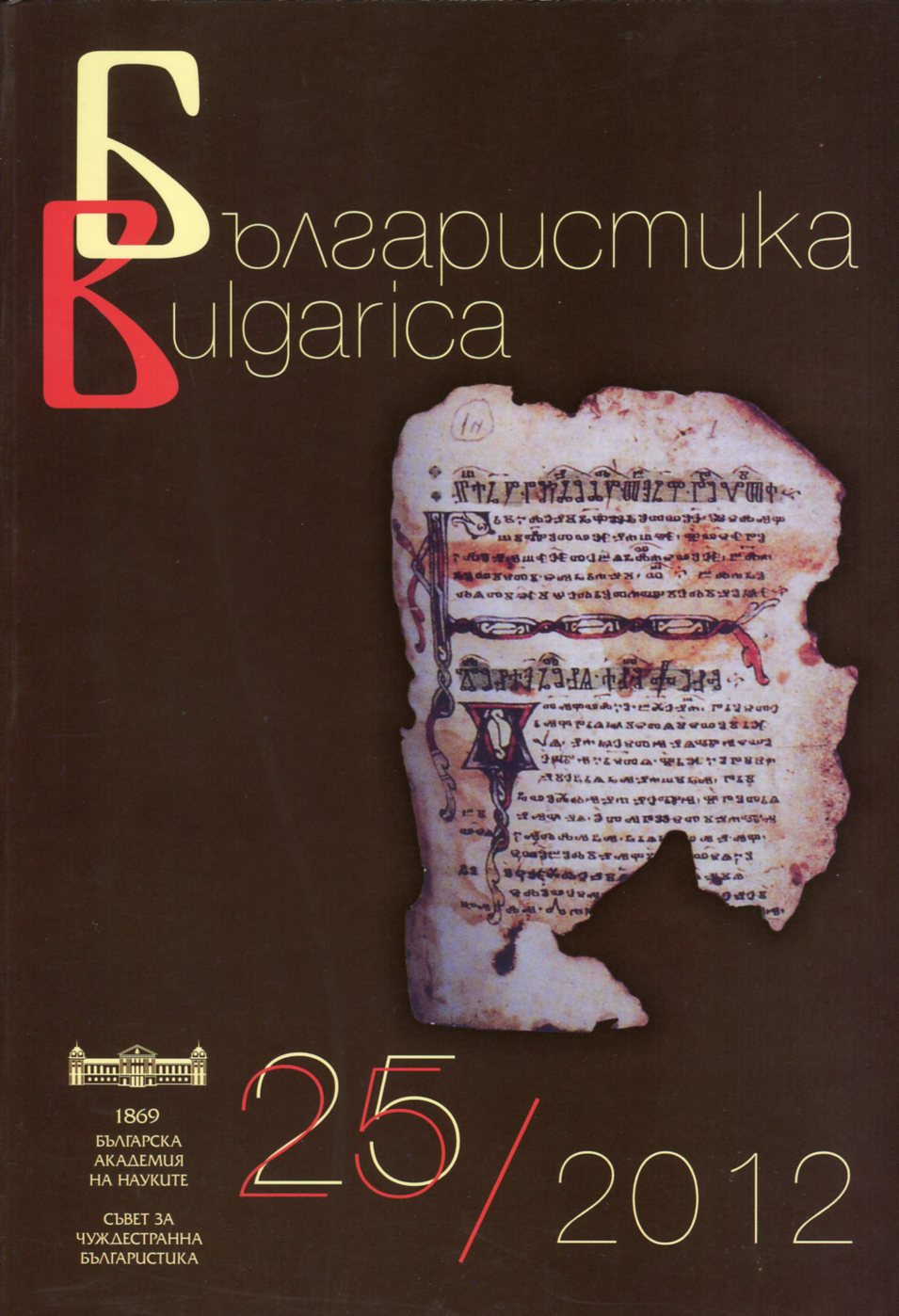
Книги 2012 г.
Selected bibliography in the field of Bulgarian Studies published in the current year
More...We kindly inform you that, as long as the subject affiliation of our 300.000+ articles is in progress, you might get unsufficient or no results on your third level or second level search. In this case, please broaden your search criteria.

Selected bibliography in the field of Bulgarian Studies published in the current year
More...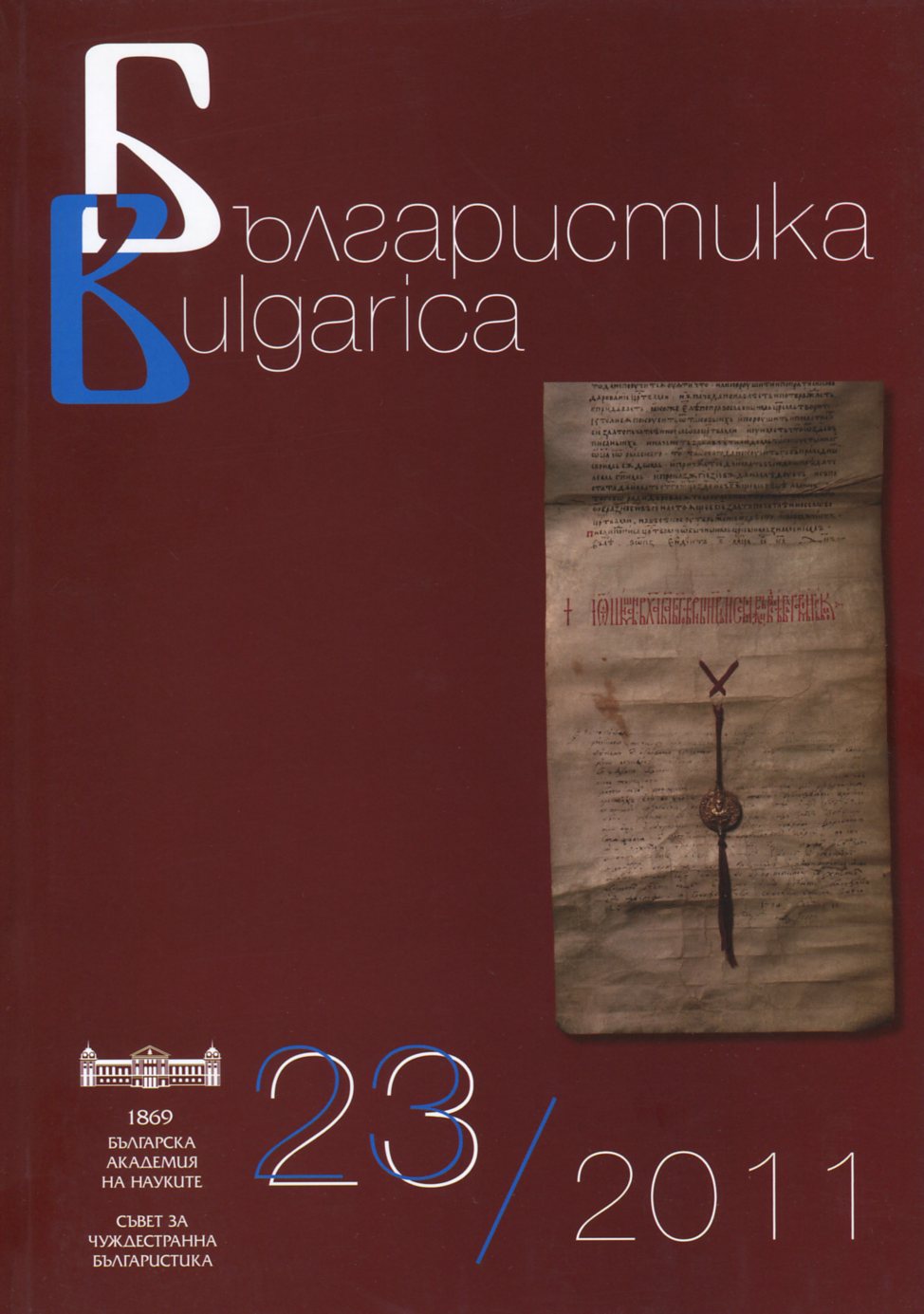
Defended PhD theses in Bulgaria in the field of linguistics, literature, history, folklore, ethnography and art studies
More...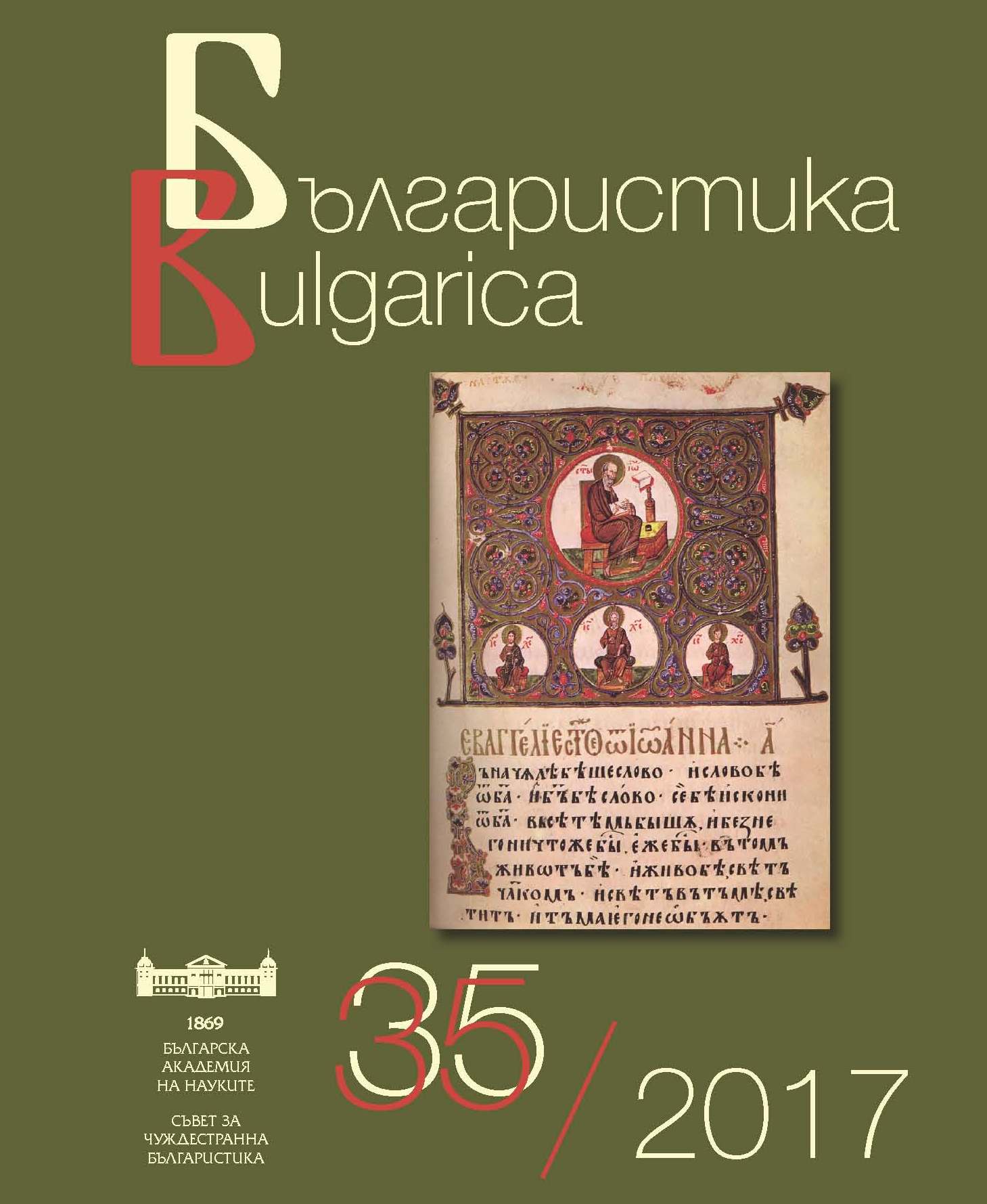
Content of the main Bulgarian scientific journals for the current year in linguistics, literature, history, folklore, ethnography, archaeology and art studies.
More...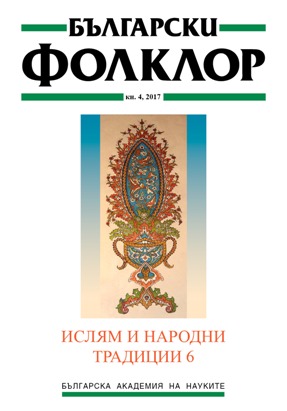
The paper presents the topics and contributions in the contemporary study of the culture of Muslims in Bulgaria. It discusses scientific publications with an anthropological focus from the post-1989 period, when the theme about ethnic and religious minorities in Bulgaria became particularly relevant. One of the main topics of research is the state policy towards Bulgarian Muslims in the 20th century, which receives a new interpretation and evaluation. The study of inter-confessional relationships remains one of the leading lines of research in the early 21st century, too. Numerous studies have been published on the various ethno-confessional groups – Bulgarian Turks (Sunni, Alevi), Roma, Tatars, Muslim Bulgarians. The publications analyze elements of their culture, issues of religion and identity. Ordinary people, their culture, their strategies for adaptation in the changing social environment became increasingly an object of study instead of political history. Changes occur also in the approach to research; attention is redirected from highlighting the common elements in the culture of Christians and Muslims to analyzing the specificities, the alternative memories, local culture and identity of Muslims in Bulgaria.
More...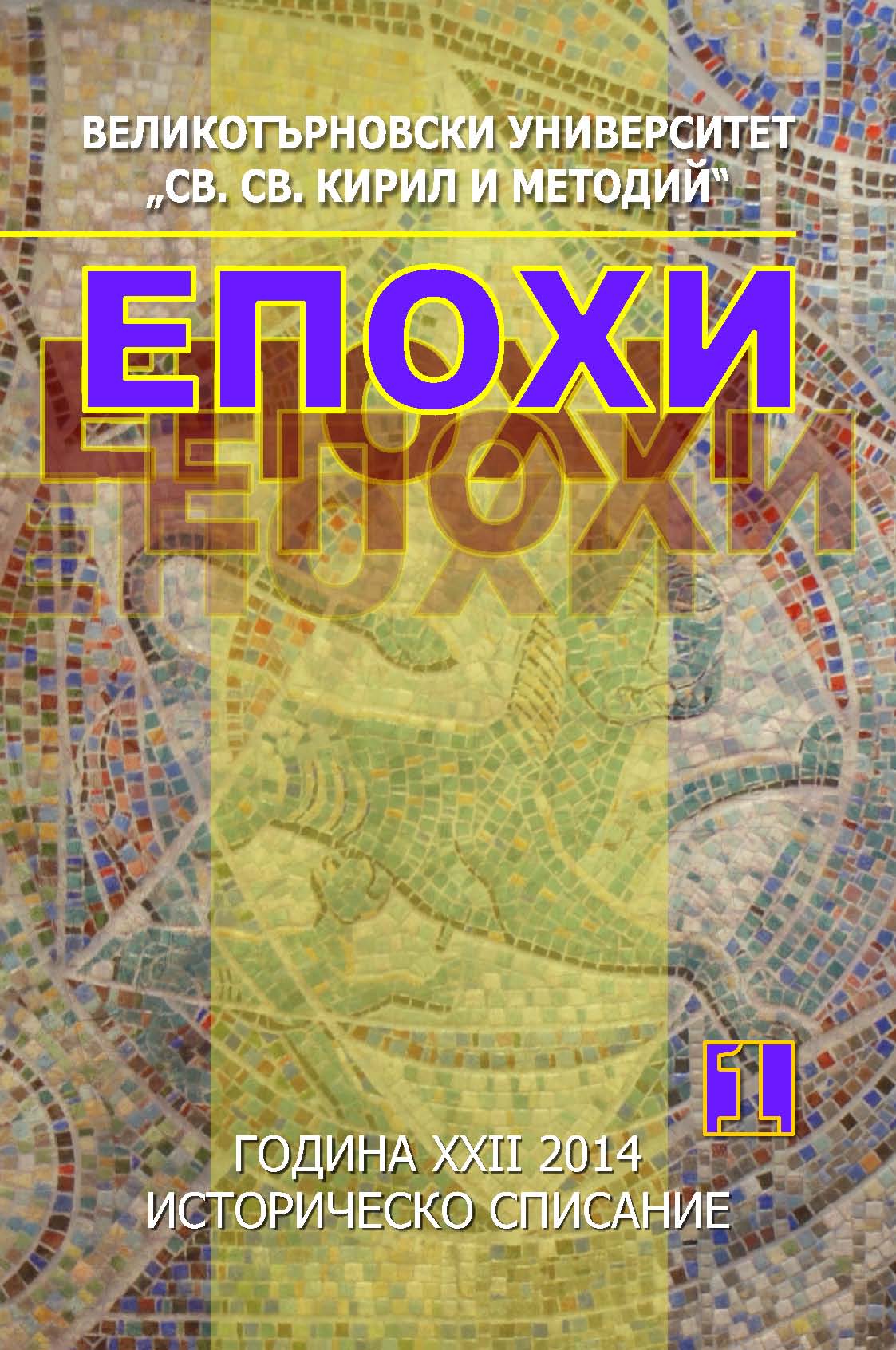
The proposed article is an addition to developing more detailed work dedicated to the development of the Bulgarian ethnography since Liberation to World War II. The review of the studies in the field of Public customary law of the late nineteenth and early twentieth century gives an idea of their chronological development and thematic diversity. Largely research are solicited and facilitated by the systematic methodological guidelines contained in published “questionnaire-directions” for the collection and study of traditional legal customs , to follow European trends and experiences in this regard. To study a particular specified share of the popular social-normative culture are directed primarily specialists in legal education, Odzhakov P., V. Baldzhiev, St. S. Bobchev and others, whose work impresses with its scientific approach to withstand attempted systematization, interpretation and evaluation of the material covered. Along with them during the period relevant publications on Bulgarian common law traditions leave D. Marinov, K. Shapkarev, St. Shishkov and others. This paper examined the research and collecting individual contributions of these authors that enrich the scientific literature and help to expand the thematic scope of the Bulgarian ethnography in an essential and dynamic period of its development as a scientific discipline.
More...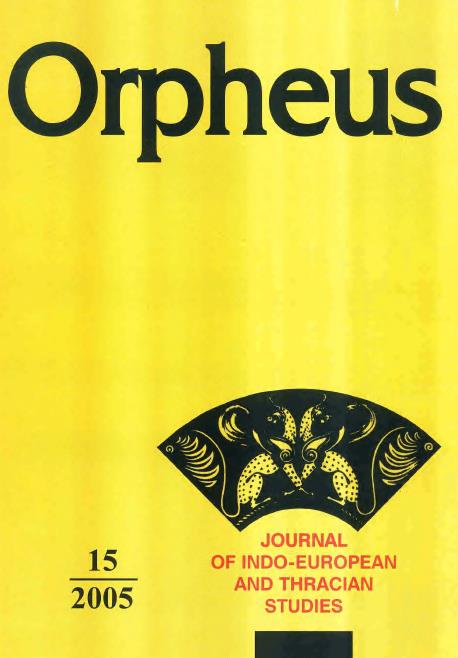
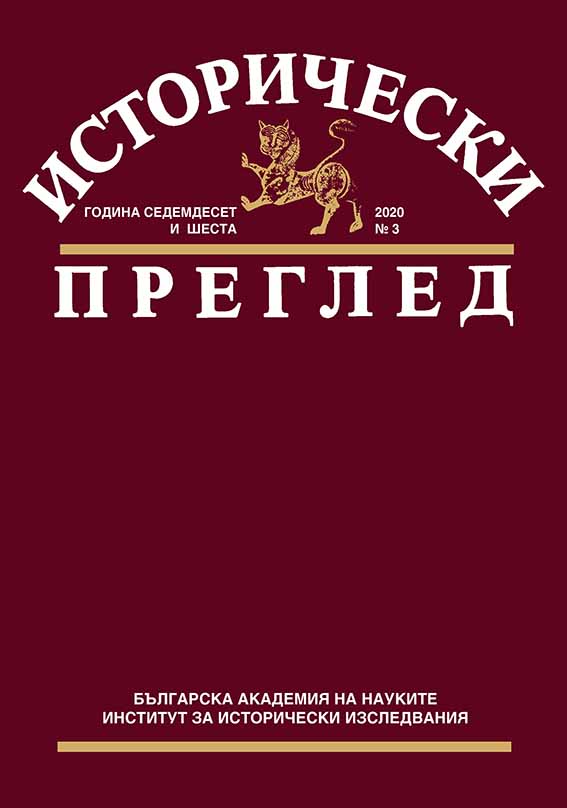
The article presents the results of an inquiry conducted among historians and non-historians in the framework of an international research project. The purpose of the survey is to examine the attitude of modern Bulgarian society to Russia/Soviet Union/Russian Federation and its role in Bulgarian history. Respondents answered questions related to the more general problem of the role of myths in history in general and those related to Russia in particular; how myths are born; which factors contribute to their public dissemination; which moments in history are most distorted or falsified in textbooks and in the media; who is interested in this; Is it possible to demythologize the Bulgarian-Russian relations. The inquiry showed the deep differences in Bulgarian society towards Russia. The majority of Bulgarians have a strong emotional attitude towards it, regardless of whether they express negative or positive feelings. And this division is manifested in all professions, ages, social groups. The survey gives grounds to conclude that despite the profound changes from the years of transition and the reorientation of Bulgaria to Western institutions, Bulgarian-Russian relations continue to be important for the Bulgarian society.
More...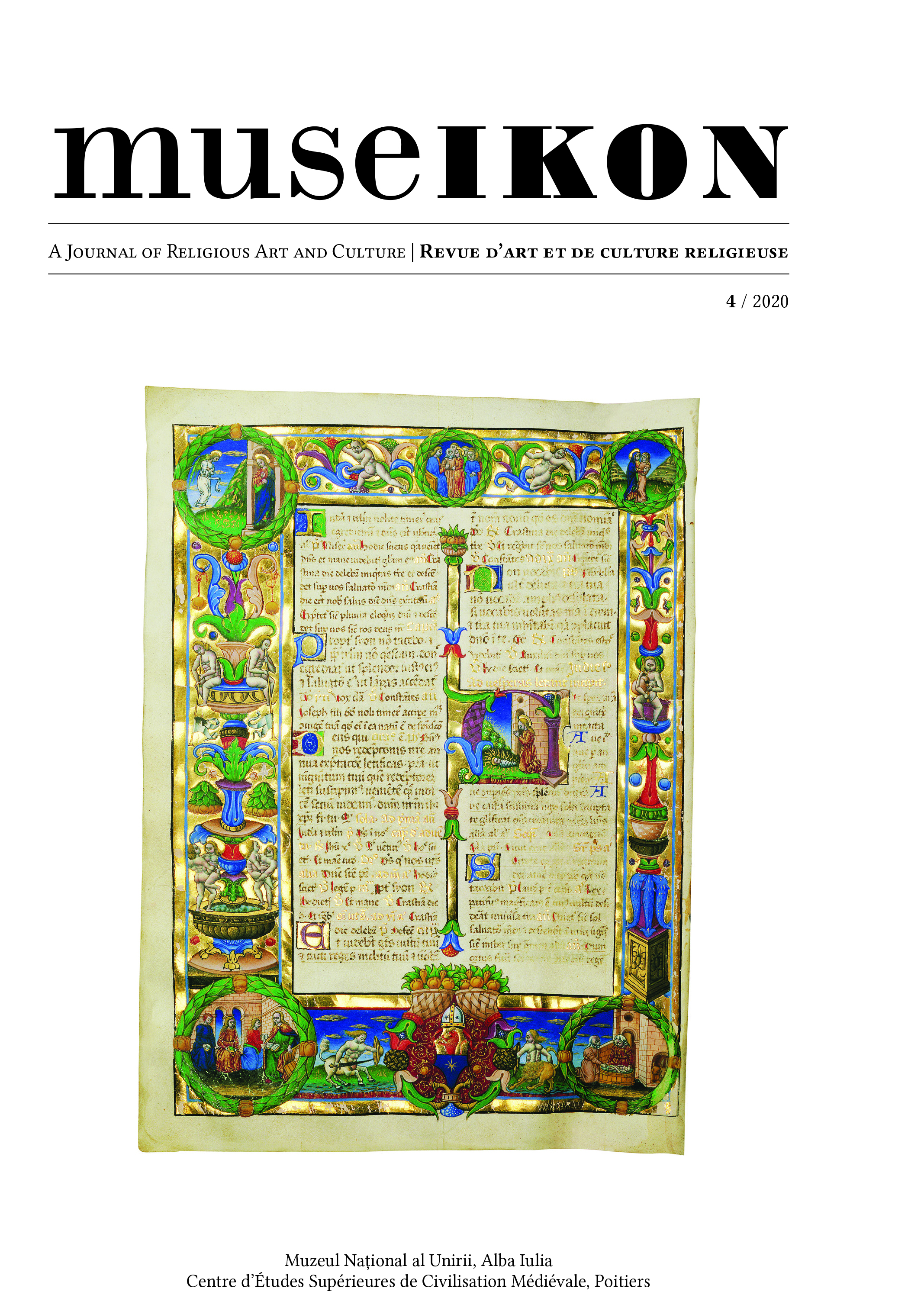
La découverte d’une inscription slavonne dans le narthex de l’église du monastère de Râmeţ (comté d’Alba) en 1966, sa relecture avec des moyens techniques spéciaux en 1978 et sa publication officielle en 1985 ont porté à l’attention des historiens le nom du peintre (Mihul du Criș-Blanc), le nom de l’évêque fondateur (arche- vêque Gélase), le roi régnant lorsque la nef de l’église était peinte (Louis d’Anjou) et l’année 1377. Les Ortho- doxes de Transylvanie auraient eu une hiérarchie ecclésiale organisée autour d’un archevêché et une école rou- maine de peinture en pleine affirmation. Toutefois, ces informations résultent incohérentes par rapport au con- texte politique ou ecclésiastique – les Roumains étant fréquemment invites a rejoindre le rite latin – et au con- texte artistique. À ce jour, Mihul demeure une figure singulièreet ses créations n’ont pas encore trouvé de termes de comparaison. La nouvelle lecture de l’inscription proposée dans cette étude part de la constatation que la dernière partie du texte, où se trouvent le nom, la mention du roi et la datation, demeure illisible (même après l’examen aux rayons ultraviolets, comme en témoignent les clichés pris en 1978, conservés dans le dossier de restauration et partiellement publiés en 1985). D’autres images ont été publiées pour soutenir la lecture proposée, en mettant en évidence les détails qui ont conduit à la lecture du nom Lodovic et de l’année 6885 (= 1377). Cependant, le type d’écriture et les traits linguistiques du texte de l’inscription suggèrent que les aspects paléographiques sont spécifiques à l’école d’orthographe fondée à Tarnovo par le patriarche bulgare Euthyme (1375-1393), plus tard diffusés par ses disciples en Serbie, en Moldavie et en Russie. La réforme d’Euthyme ne pouvait pas atteindre la Transylvanie en 1377. La prédisposition du peintre à écrire les mots tels qu’il les con- naissait dans sa propre langue témoigne du fait qu’il a appris le slavon quelque part en Transylvanie, très proba- blement auprès d’un moine serbe. L’inscription et, implicitement, les peintures de Mihul dateraient ainsi de la fin du xve siècle ou des premières décennies du siècle suivant. La comparaison avec l’inscription sculpté sur le socle de l’église de Feleac, datée de 1516, dont le texte contient des parties similaires à l’inscription de Râmeţ, suggère que le roi mentionné par Mihul était en réalité Vladislas II. Il est appelé LASL´U KRAL´ dans l’inscription de Feleac et le nombre de signes graphiques utilisés pour rendre ce nom s’inscrit parfaitement dans l’espace aujourd’hui illisible où le nom du roi a été transcrit dans l’inscription de Râmeţ. En utilisant la même méthode de distribution des signes dans l’espace afférent de l’inscription de Râmeţ, la période dans laquelle elle pourrait être peinte peut être réduite à l’intervalle 7011-7024 (= 1503-1516). Compte tenu du conflit entre Jean, évêque de Mun- kács, et Hilarion et Gélase, hégoumènes du monastère de Peri, il est fort possible que l’hégoumène Gélase ait été élevé au rang d’archevêque de Transylvanie. Un acte royal de 1494 semble d’ailleurs le suggérer. La résidence était censée se trouver à Feleac, mais il s’avère qu’elle aurait pu fonctionner en parallèle avec le diocèse de Feleac, sans nécessairement être unie à Rome. La possibilité d’installer Gélase à Râmeţ offre un point d’appui pour l’anti- quité de l’évêché de Geoagiu de Sus, évoqué dans l’acte de nomination de l’évêque Christophore en 1557, le mo- nastère de Râmeţ étant en fait la véritable (ou du moins la première) résidence de l’évêché ayant juridiction dans les parties méridionales de la Transylvanie. Un document de 1622 le désigne, en effet, comme « monastère de Geoa- giu (situé) à la limite du domaine Geoagiu (de Sus) » (Giogi klastrom s ez Giogi hatarban vagion). Un archevêque arrivé du nord, d’un espace familier avec l’art des Ruthènes, peut également expliquer le type de Deisis avec ar- changes et saints militaires représenté sur le mur oriental du narthex de Râmeţ. Le fait de peindre cette scène au début du XVIe siècle pose à nouveau le problème de la datation de la première couche de peinture, conservée dans la niche de la Proscomidie et à la jonction de l’iconostase avec le mur nord de la nef, pour laquelle la présente étude propose l’année création du monde 6895 (= 1386-1387). L’inscription en roumain, sculptée dans la pierre et placée au XVIIIe siècle à l’extérieur, sur le côté nord, au-dessus de l’entrée propose d’ailleurs cette date. La mention du nom du roi Matthias (Matiiaș crai) dans la même inscription peut fournir la limite inférieure d’une troisième étape de décoration de l’église, sa limite supérieure étant le milieu du XVIe siècle, étape où la nef, l’iconostase, et peut-être une peinture murale extérieure, furent repeintes. La dernière étape importante est liée au nom l’évêque Inocenţiu Micu-Klein, à l’initiative duquel l’autel a été repeint en 1741
More...
Le manuscrit conservé à la Bibliothèque de l’Académie Roumaine de Bucarest sous la cote Ms. rom. 1790 n’est pas comme les autres. La page du titre l’indique elle-même : on a affaire à un Sluzhebnik contenant les li- turgies des saints Jean Chrysostome et Basile le Grand, y compris quelques « autres offices d’hiérarques ». Com- mandité par le métropolite Ștefan de Hongrovalachie († 1668), achevé avec sa bénédiction à une date qui reste encore difficile à préciser, cet Ἀρχιερατικόν, destiné à l’usage exclusif des hauts prélats, est décoré de nombreuses miniatures et contient des textes en trois langues : les textes liturgiques sont en slavon ; les ecphonèses, c’est-à- dire les parties finales des ecténies à lire à voix haute, sont en grec, mais en caractères cyrilliques et souvent en transcription phonétique ; alors que la plupart des indications de régie à l’attention de l’officiant et presque tout le « Règlement pour l’ordination du métropolite et de l’évêque » sont en roumain. En partant du témoignage d’un voyageur russe en Moldavie et en Valachie, de l’Ekténie pour les défunts du Ms. rom. 1790 et du « dossier » du Synode de Târgovişte (1659), l’auteur a essayé de reconstituer le climat religieux de l’époque et de formuler une explication quant à l’inhabituelle initiative liturgique multilingue du métropolite de Valachie.
More...
La recherche menée sur les collections de la Bibliothèque Metropolitaine de Bucarest a mis en exergue un certain nombre de volumes qui présentent un intérêt scientifique particulier en vertu des notices transcrites dans leurs pages. Il s’agit de livres ayant appartenu à des notables du XVIIe-XVIIIe siècles (prince Constantin Brancovan, métropolites Sava Brancovici et Benjamin Costachi, ou l’imprimeur Georges Radovici), autant d’écrits roumains anciens imprimés à Târgoviște et Bucarest, que de textes étrangers ramenés de Venise ou de Lviv.
More...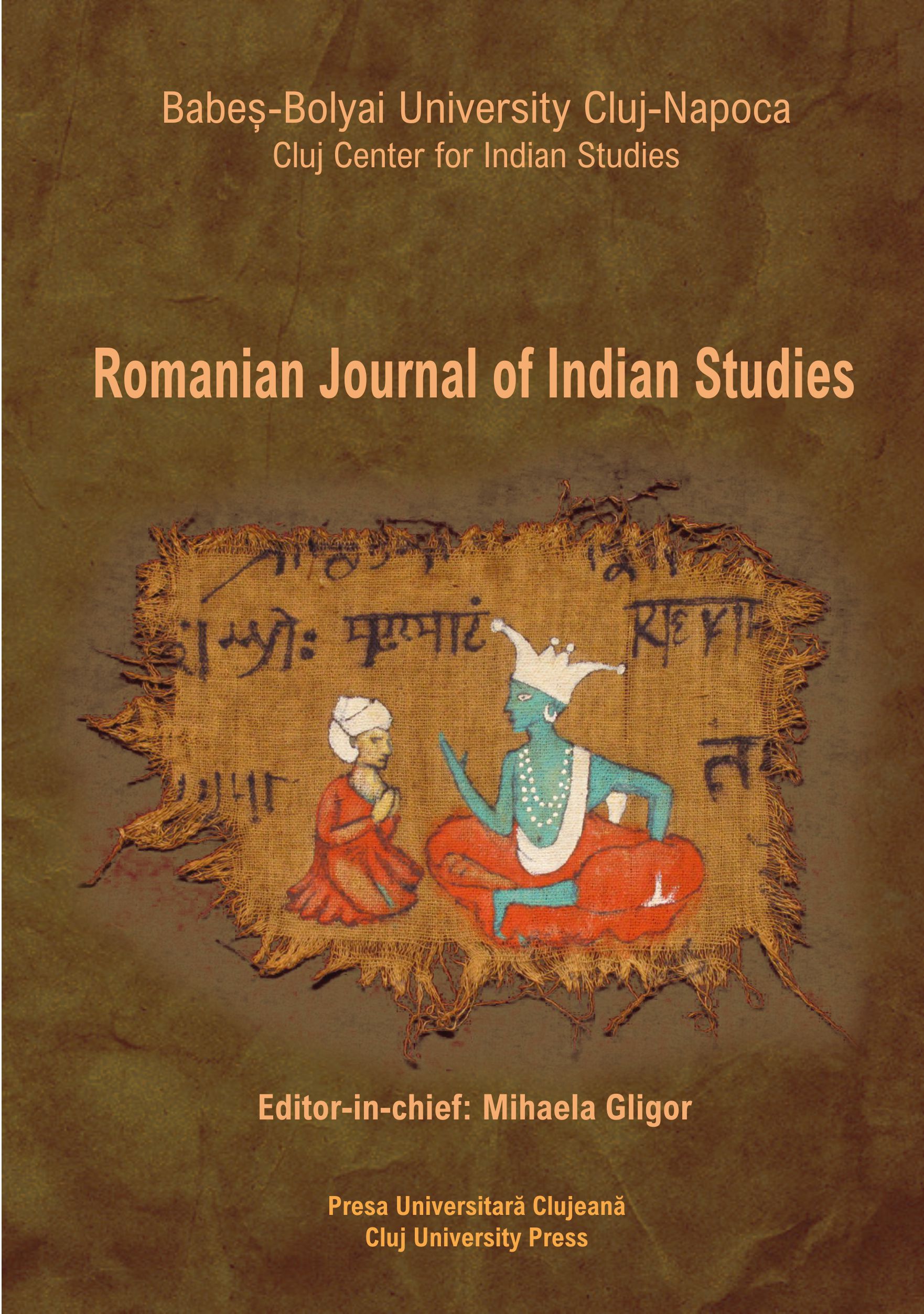
Man is often told that life begins with birth. Hindu tradition is one of those examples that highlight the fact that life begins much earlier, with early stages of pregnancy. We shall not adopt a position from a medical or ethical point of view, but will emphasize this claim judging by the care and effort put into the well-being and good health of foetus and expectant mother by members of this religious tradition from ancient times. Archaic Hindu society was very strongly under the spell of the supernatural and magical, which surfaces in many sacred texts. It is interesting to notice and understand how the supernatural, religious and social intertwine and bring order into the lives of its people.The present paper focuses on pre-natal rites of passage as having an ordering quality in man’s life, mentioning key examples from sacred texts related to cultural and religious details that are the backbone of Hindu tradition. It is a shy attempt to bring to light features in the thought process of the ancient Hindu society in order to better relate and comprehend the treasures of its rich past.
More...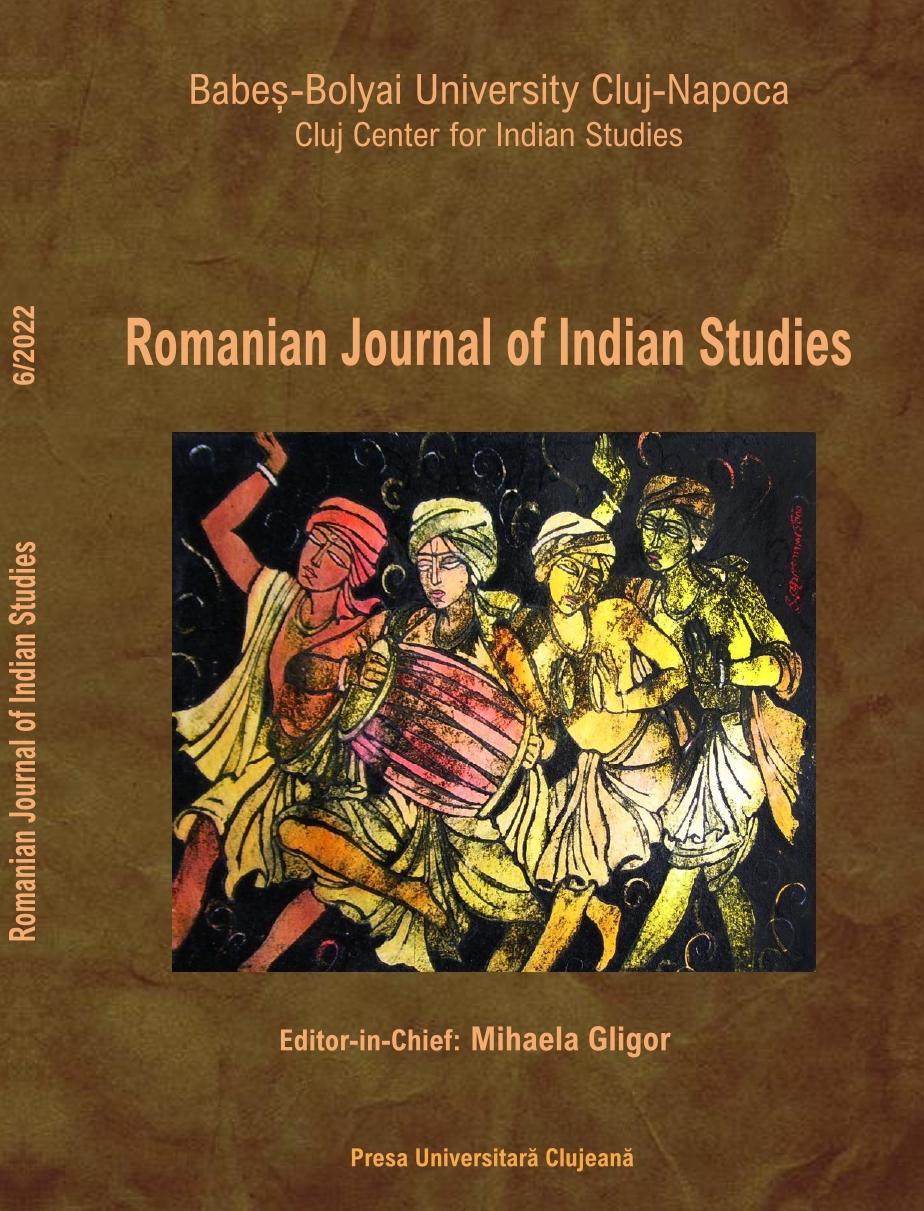
Between 20 and 25 of June, 2022, Professor Gayatri Chakravorty Spivak was guest of Babes Bolyai University Cluj-Napoca. In her Romanian trip, she was accompaniated by her sister, Professor Maitreyi Chandra. The two of them offered a wonderful talk, on June 22, On Women’s Education in India. The audience had the opportunity to learn details about the educational system of India and how it changed during time. Their dialogue was transcribed by Georgiana Nicoara, PhD student at the Faculty of Letters, Babes-Bolyai University, Cluj-Napoca.
More...
The main aim of this study is to explore and analyze the labour conditions and labour relations of migrant workers, in two sub-parts of the construction sector in New Delhi; one in big public works projects in Delhi University and Jawaharlal Nehru University and second, the study of labour chowks at Rani Bagh, Kingsway Camp and Wazirpur.
More...
Kolkata’s cultural landscape can be defined by the existing foodscape. The heritage restaurants existing in the city are an amalgamation of the cultural diffusion between the different communities that reside in the city. In this paper, primarily, three food zones have been recognized, each specializing in a particular type of cuisine. The paper seeks to understand the development of the cuisines in relation to these food zones, how different communities have slowly exchanged ideas which have led to the creation of a new type of fusion cuisine, modified in accordance to suit local tastes and preferences. This acculturation process is constantly occurring and is reflected in the present day foodscape of the city.
More...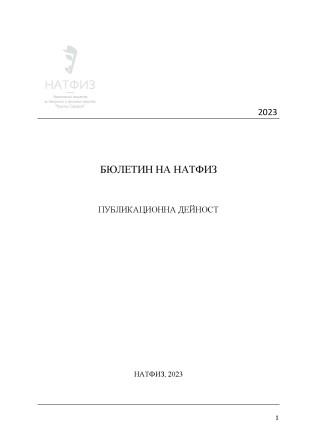
Bulletin “Publication Activity” contains bibliographic information on publications by NATFA lecturers for a calendar year. The publication contains monographs, publications in world databases, publications in specific world databases, publications in the database of the National Reference List of NACID; Publications in databases of publications specific to the field: Culture, Literary Gazette, national media for culture; publications in scientific collections and in non-refereed publications; publications in foreign publications.
More...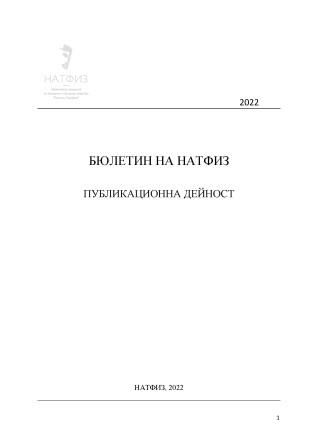
Bulletin “Publication Activity” contains bibliographic information on publications by NATFA lecturers for a calendar year. The publication contains monographs, publications in world databases, publications in specific world databases, publications in the database of the National Reference List of NACID; Publications in databases of publications specific to the field: Culture, Literary Gazette, national media for culture; publications in scientific collections and in non-refereed publications; publications in foreign publications.
More...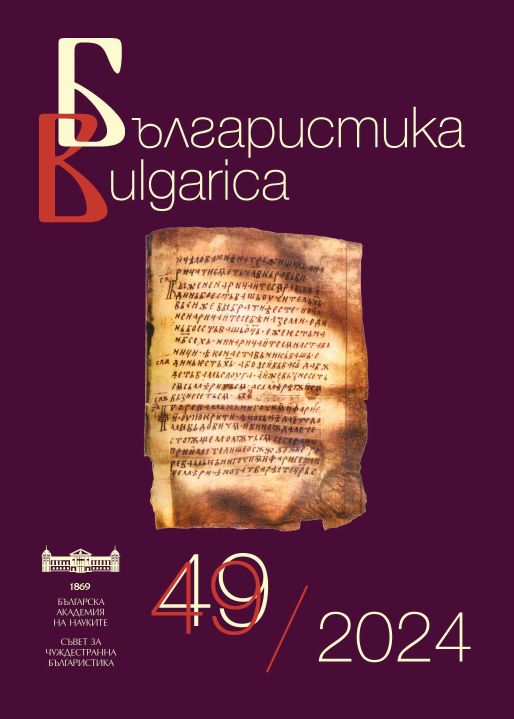
Defended PhD theses in Bulgaria in the field of linguistics, literature, history, folklore, ethnography and art studies.
More...
Data about scientific events in the field of the humanities in Bulgaria in the second half of 2024.
More...
